

THE EARLY CHILDHOOD DIVISION
The Early Childhood division is composed of grades Preschool 2s, Preschool 3s, Preschool 4s, and Kindergarten. Our goal is to launch each child’s formal educational experience by establishing a foundation for academic success and joy for learning that will continue with each child as they progress through every phase of their academic career and, we hope, for a lifetime. Within a broad, deliberate, and thoughtful program, each of these grades provide an environment that celebrates the child intellectually, emotionally, socially and physically within an innovative learning experience.

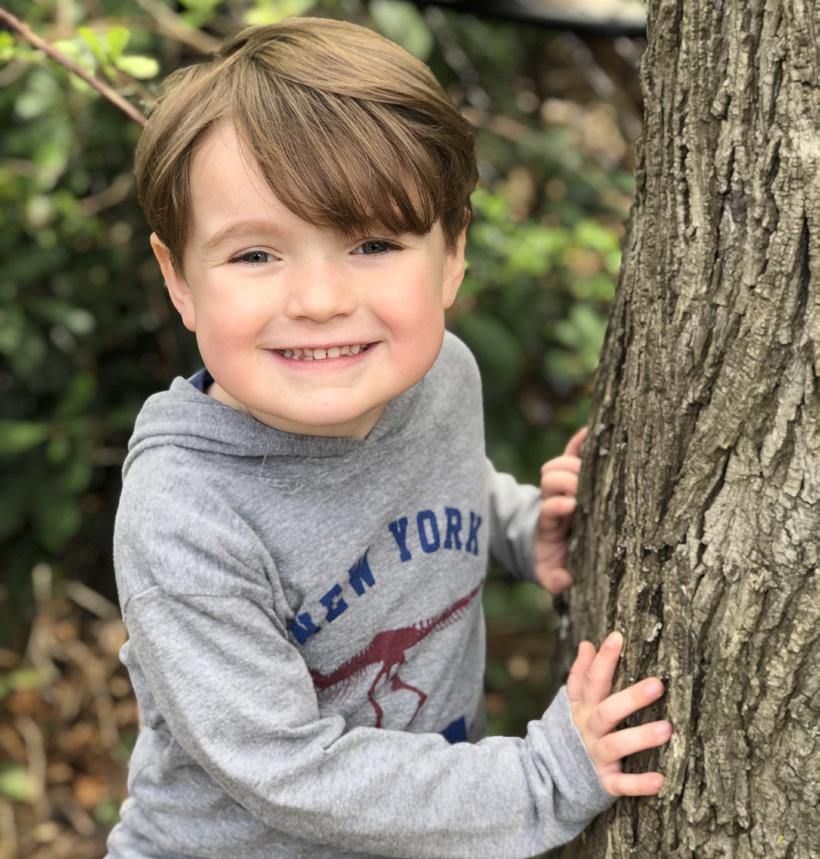

OUR MISSION
Harbor cherishes childhood, cultivates wonder and inspires confident learners and leaders.
DIVERSITY STATEMENT
Harbor believes celebrating diversity
enriches the lives of everyone, and that embracing the essence of each individual makes us stronger as a school community. We honor different perspectives, cultures, ways of life, and the beliefs people bring when they walk through our doors. As a result, our students possess the moral and ethical foundation that prepares them to live with compassion and empathy in a global world.
PRESCHOOL 2s
Our littlest learners at Harbor Country Day School experience a school setting that
introduces them to socializing with peers which begins the starting point that nurtures kindness and empathy. We believe in the importance of educating the whole child, which at this age includes the social, emotional, physical and cognitive developmental skills. There is a balance between open ended play and guided learning time to foster each child’s love of learning, creativity, exploration, and discovery with teachers who understand the development and needs of two year-olds.
Our staff provides a safe, nurturing and loving classroom environment that children enjoy. Our students will build trust through joyful experiences as they begin to understand the world around them. The Preschool 2s follow a play-based program with emphasis on exploration, discovery, sensory play, and social learning. The small class size enables teachers to get to know students and their families. The balanced program includes a variety of activities, supplies and equipment to meet the various interests children have and activities with constant opportunities for creative play. The curriculum is designed using a thematic approach that includes activities such as crafts, science explorations, and interactive play. Students will use their senses to learn about different topics and make connections to the world using a hands-on approach. The 4:1 student-teacher ratio provides individualized instruction to each child. Preschool 2s meet on Tuesdays and Thursdays from 8:30 AM — 11:30 AM.
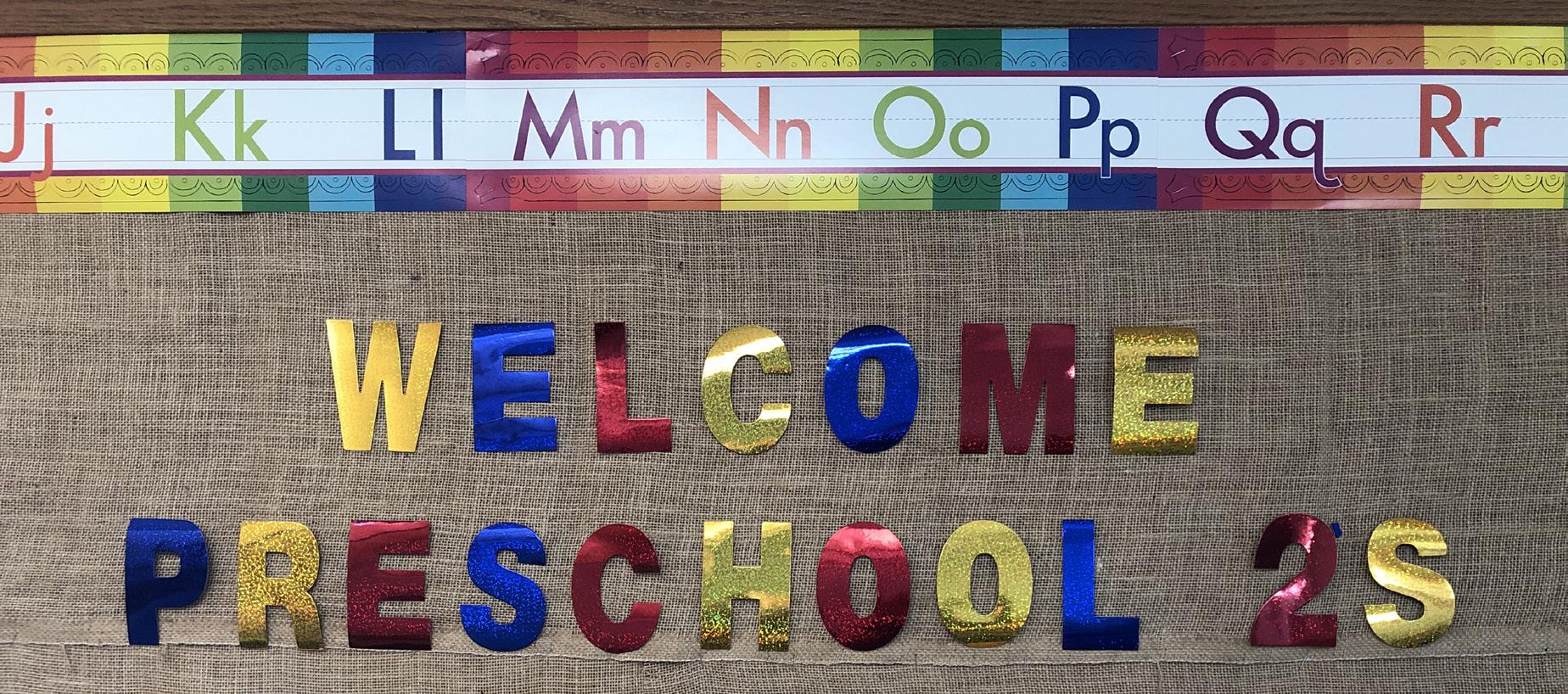
Typical Preschool 2s Schedule
The schedule for our Preschool 2s provides structure with a mix of both whole group and small group activities along with a time for exploration and play. Establishing a routine gives the children a sense of security and something to look forward to each day.
8:30 Arrival Time
8:30 - 9:30 Free Play
9:30 - 9:40
Clean Up
9:40 - 10:00 Snack
10:00 - 10:35
Recess
10:35 - 10:50 Special Classes (Music & Art) 10:50 - 11:10 Projects
11:10 - 11:20 Circle Time 11:20 - 11:30 Pack Up 11:30
Dismissal
January through June 2020 Monthly Themes
January
All About Me & My Family
February
Winter
Valentine’s Day
March
Rainbows
Transportation
April Spring Farm May & June Summer Ocean Life
PRESCHOOL 3s & 4s
The preschool curriculum draws upon young children’s own
experiences. The children are gently guided through their first school experience in a setting that is warm, nurturing, and stimulating. The small class size and low student-teacher ratio supports the optimal developmental and educational needs of our youngest students. Both the Preschool 3s and 4s classes offer five-day half-day or full-day programs.
As the beginning step to children’s academic careers, our preschool classrooms are structured to foster exploration and wonder through interactive and developmentally appropriate activities. Our classrooms incorporate sensory-based activities, which allow the students to learn with the use of their senses. This hands-on approach inspires the selfconfidence that young learners need to become successful in the classroom.

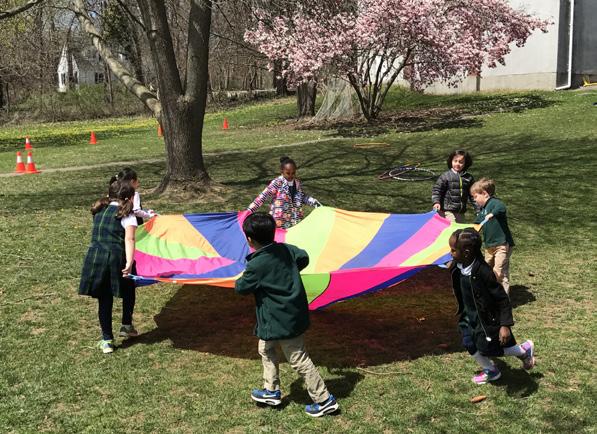
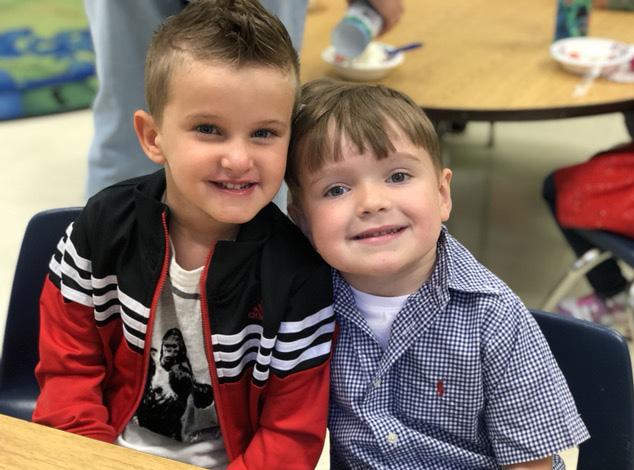
Preschool 3s & 4s Themes
September
All About Me
Family
Friendship
Community Helpers
October
Five Senses
Apples
Pumpkins
Halloween
November
Fall
Native Americans
Pilgrims
Thanksgiving
Forest Animals
December
Holidays and Traditions
(Two weeks)
January
Winter
Hibernation
Adaptation
Polar Animals
Transportation
February
Groundhog Day
Dental Health
Valentine’s Day
Dinosaurs
March
Wind
Rainbows
St. Patrick’s Day
Dr. Seuss
Space
April
Signs of Spring
Reduce, Reuse & Recycle
Life Cycles
Insects
May/June
Farm
Mother’s Day
Zoo
Rainforest
Aquarium & Ocean Life
Signs of Summer
Preschool 3s & 4s
SOCIAL DEVELOPMENT
Our preschool teachers create a safe, supportive learning
environment, which gives the students the security to try new things and take chances without fear of failure. Children are given many opportunities that encourage independence and confidence and enable them to meet with success every day. From the start of the school year, the preschool students participate in creating classroom guidelines for the good and well-being of all, helping them to develop a sense of community, responsibility and self control.
In learning centers and in play areas, our preschool children are given daily opportunities for free play, cooperative play, sharing toys and materials, and taking turns in a variety of learning experiences. By participating in the daily circle time routine and story time, children develop their listening skills and increase their attention span so that they become more attentive listeners. Students are given many opportunities to express themselves in a secure and supportive environment, which in turn helps to build greater self-confidence.
In the Preschool 3s classroom, the students are beginning to understand simple directions and learn classroom routines and rules. Within the Preschool 4s setting, the students are exposed to increased complexity of projects and activities, which requires more attention and increased skills in listening and following directions.
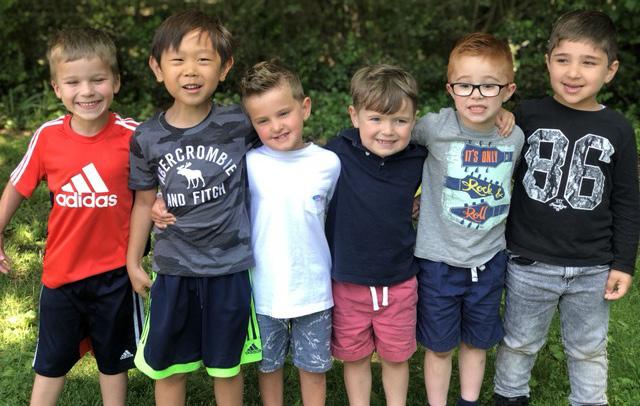


Preschool 3s & 4s
LITERACY/LANGUAGE
Students enrolled in the Preschool 3s classroom begin to acquire an understanding of emergent literacy , the concept that the written word stands for the spoken word. Teachers read to the children daily, asking them to recount the experiences in a story and to describe the basic idea of a story. In the Preschool 4s classrooms, the students are asked predictive and analytical questions during story time to stimulate deeper thinking. The children in both settings are encouraged to respond using complete sentences and clear articulation. In each preschool classroom, the children are surrounded by written words through classroom labels, signs, environmental print, and literacy activities that are incorporated into the children’s daily activities.
In both the Preschool 3s and 4s settings, students are exposed to alphabetic principle , which is the understanding of the relationship between letters and sounds, as well as the shapes and spatial features of letters. The children begin to make connections between letters and sounds through alphabet books, puzzles, listening to stories, and participating in songs and funfilled finger plays.
In the Preschool 3s classroom, the children are provided with a variety of ways to observe their name in print. With continued experience, the preschoolers begin to recognize the first letter in their name, and then the letters that follow it. By understanding letters and word knowledge through name recognition, children begin to apply this understanding to recognize other simple environmental print displayed throughout the classroom and school. The ideas, sequence of events, and predictions of a story, poem or lyric in a song begin to emerge at this age and are developed through a variety of games, stories, and songs presented in the classroom, as well as during their sessions with the school librarian and music teacher.

Preschool 3s & 4s
PRESCHOOL 4s PUBLIC SPEAKING
ACTIVITIES
In Preschool 4s, the children have many opportunities to build confidence through various speaking activities during the school year. During Harbor’s Winter Solstice celebration, the Preschool 4s recite a seasonal poem, during All School Meeting, for our full student body to enjoy. The children also participate in weekly sharing time with their peers to build upon their expressive language. The goal is for our students to feel comfortable and confident to speak with others within both small and large group settings. In addition, in one of our major projects of the year, our Preschool 4s students are assigned individual projects to learn more about different polar, desert, and jungle animals. With these projects, students create posters about their particular animals that include pictures and facts about their animals. The children present these projects to their peers mid-year, and to their peers and parents at the end of the year.

Preschool 3s & 4s
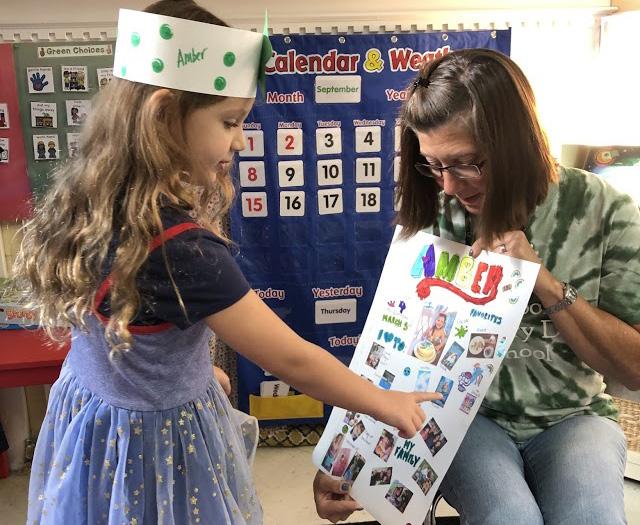
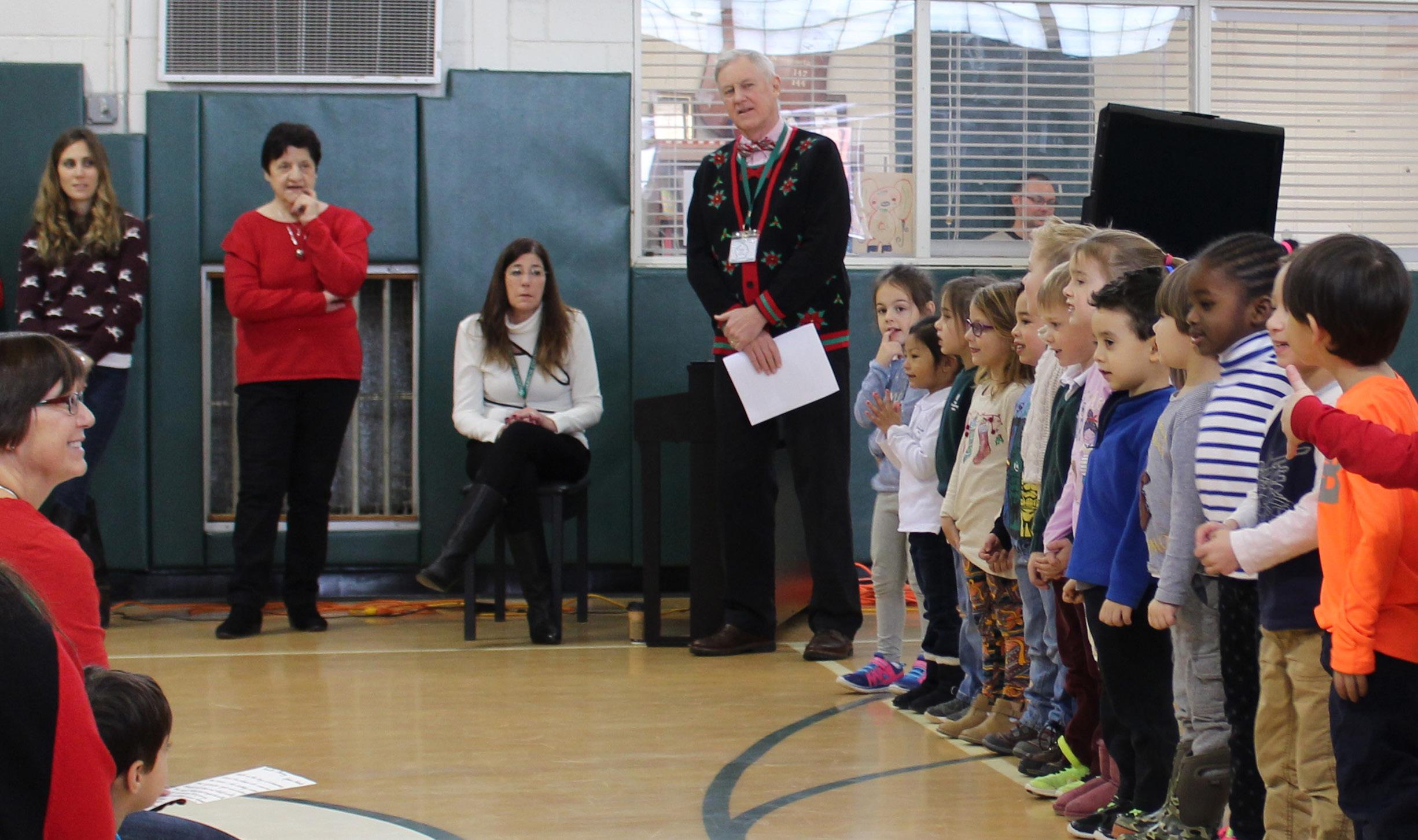
OUR LITERACY GOALS
The Preschool 3s Classroom
Begin to understand the idea that letters and words represent our spoken language
Begin to understand the relationship between letters and sounds, the shape of letters, and the spatial features of letters
Recognize the letters of their name
Understand the basic ideas in a story
Begin to understand a sequence of events or ideas
Participate in a weekly library program
Explanation of art techniques using their creative skills when presented with new art terminology (applying their knowledge when creating art)
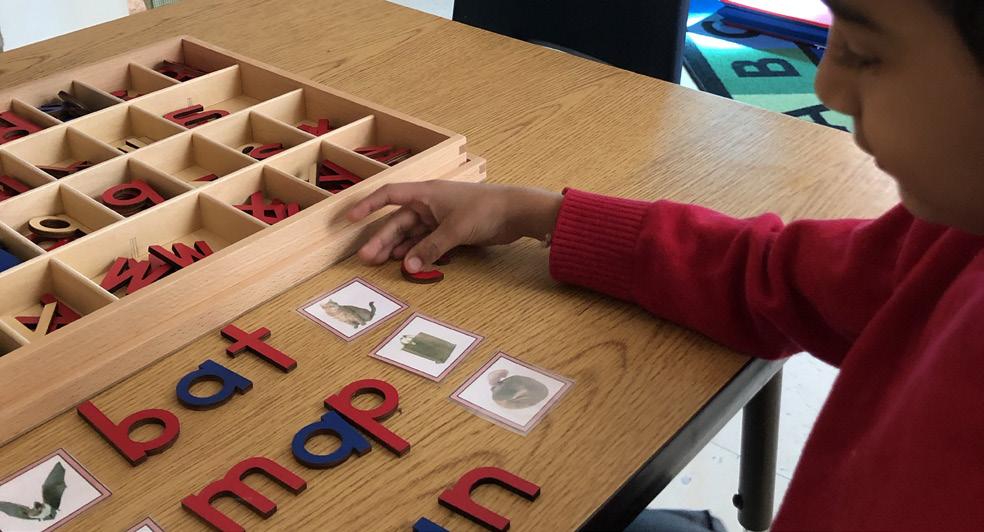
The Preschool 4s Classroom
Understand the idea of emergent literacy— that letters and words represent our spoken language
Understand the idea of alphabetic principle, the relationship between letters and sounds, the shape of letters, and the spatial features of letters
Recognize and write the letters of their name
Identify some upper and lower case letters
Begin to develop an understanding of phonological awareness: rhyming sounds, initial consonant sounds
Begin to recognize simple print (yes, no, love, mom, dad, etc.)
Understand the basic ideas in a story, including plot, main characters, setting and the sequence of events
Predict the outcome of a story
Understand a sequence of ideas or events
Develop an understanding of left to right and top to bottom progression
Preschool 3s and 4s Author Study
Our young learners in both Preschool 3s and Preschool 4s focus on a different author every month. The students in the class not only get the opportunity to learn more about the author, but also how their books connect to the students’ daily activities and themes.
After reading a story from the author, the students participate in an art project, to make connections to the text. To complete their projects, each student is asked a question about the text to not only promote higher level thinking but to also give the students an opportunity to make their own connections to the text.
The authors we study include Eric Carle, Mo Willems, Jan Brett, and David Shannon, to name a few.

Preschool 3s & 4s
MATHEMATICS
Throughout the course of the school year, we incorporate daily experiences in mathematics which includes rote
counting of objects to ten in Preschool 3s, and 20 in Preschool 4s. Throughout the school day, students are exposed to numeral recognition such as daily calendar activities and other classroom activities that involve both single-and double-digit numbers. There are a variety of classroom manipulatives such as counters, stones, beads, and other tactile objects that aid students in the process of learning how to sort, classify, and compare objects by color, size, and shape. This is completely based upon one characteristic (color) and later, using two or more characteristics (color and size). Basic shapes are introduced in the Preschool 3s classroom and then practiced the following year in the Preschool 4s classroom. This includes circles, triangles, squares, rectangles, hearts, and stars. With the use of attribute blocks, geoboards, shape and number puzzles, colored beads, and magnetic shapes the students are able to practice to become more familiar with these basic shapes. With greater experiences and increasing maturity, the children begin to further their understanding of three-dimensional shapes including spheres, cubes, and pyramids.
The Preschool 3s Mathematical Goals
Count to ten
Begin to develop one-to-one correspondence when counting
Recognize single-digit numbers
Discriminate form and identify basic shapes
Sort objects by one attribute (shape, color)
Begin to understand ordinal numbers (first, second, third)

The Preschool 4s Mathematical Goals
Rote count to 20
Count objects using one-to-one correspondence
Recognize single-digit numerals and some double-digit numerals
Understand simple ordinal numbers: first, second, third, last
Sort objects by one or more attributes
Recognize basic shapes
Begin to recognize some three-dimensional shapes (sphere, cube, etc.)
Interpret information and draw conclusions from representational graphs
Recognize comparative values of less than, more than and the same as
Compare and order objects by size
Recognize and produce simple rhythmic and visual patterns
Preschool 3s & 4s
SCIENCE
Early childhood science is a time for exploration and discovery. Our science specialist visits the preschoolers twice each week with hands-on lessons
such as hatching baby chicks, caring for caterpillars, and studying ant farms. Students learn about light and shadows, friction and gravity, air, and motion. They maintain a Long Island ecosystem fish tank and learn about the ocean, farm life, adaptations, and hibernation. Students study aspects of biological, earth, and physical sciences with the early childhood/lower school science specialist. They are encouraged to visualize themselves as scientists as they develop science skills including observing, classifying, predicting, recording data, and drawing conclusions. They are introduced to the scientific method through inquiry-based activities and lab experiences. They challenge themselves and persevere in solving complex questions, developing grit by “failing forward” in various STEAM activities.
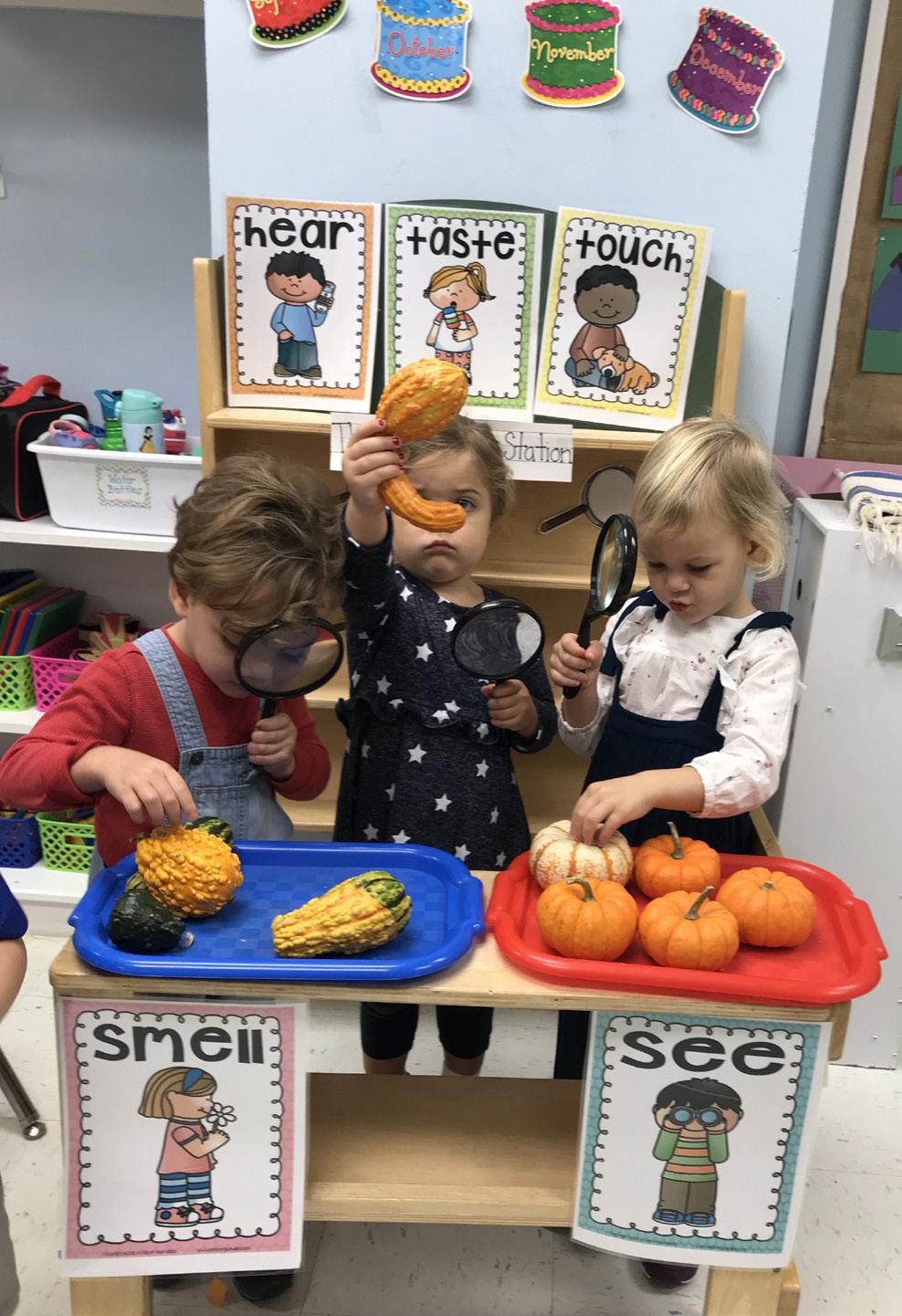
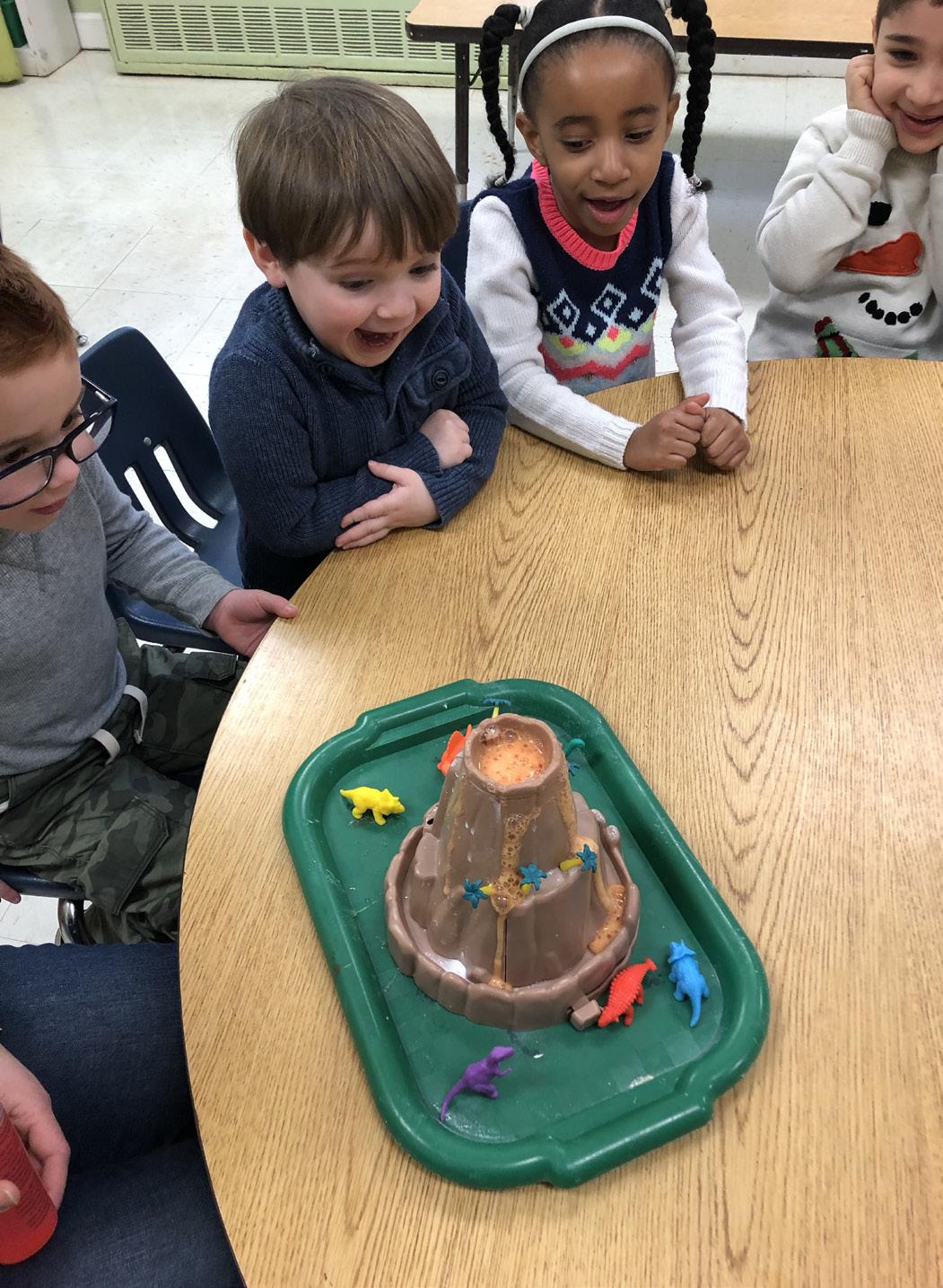
Preschool Science Highlights
The science specialist designs hands-on experiments centered around the weekly classroom themes as well as extra-curricular themes.
Occasionally, older grades share experiments and activities with our preschoolers.
Highlights of the curriculum include: inquiry-based lessons such as hatching baby chicks, basic circuitry, and chemical reactions.
Preschool Science Sample Lessons
Recognizing science bins
Basic reactions—solid (baking soda) + liquid (vinegar) → gas (blew up the balloon)
Transportation—ramps (slope, friction)
Observations—pop rocks
Static electricity—acting it out, making ghosts dance
Darwin’s Finches activity
Mayflower—float/sink, make a boat STEM
Properties of water—adhesion/cohesion
Space—phases of the moon
Preschool 3s & 4s
FINE MOTOR
Our preschoolers develop eye, hand, and eye-hand coordination through many classroom activities that utilize a blend of manipulatives. On a daily basis, the students are using markers, crayons, pencils, laces, glue sticks, and scissors. As the school year progresses, the students continue to be exposed to different skills. With time and growing maturity, the students will gain the ability to trace lines, cut straight, curved and zig-zag lines, draw, color, and write. In order to strengthen the students’ dexterity in the small muscles in their hands, the students are exposed to using small manipulative toys. As they increase their accuracy, the students will be able to manipulate large and small objects. Within each classroom, there are writing centers that encourage students to practice using writing tools and scissors. This is also used when completing daily classroom projects, to help children progress toward developing a tripod grasp.
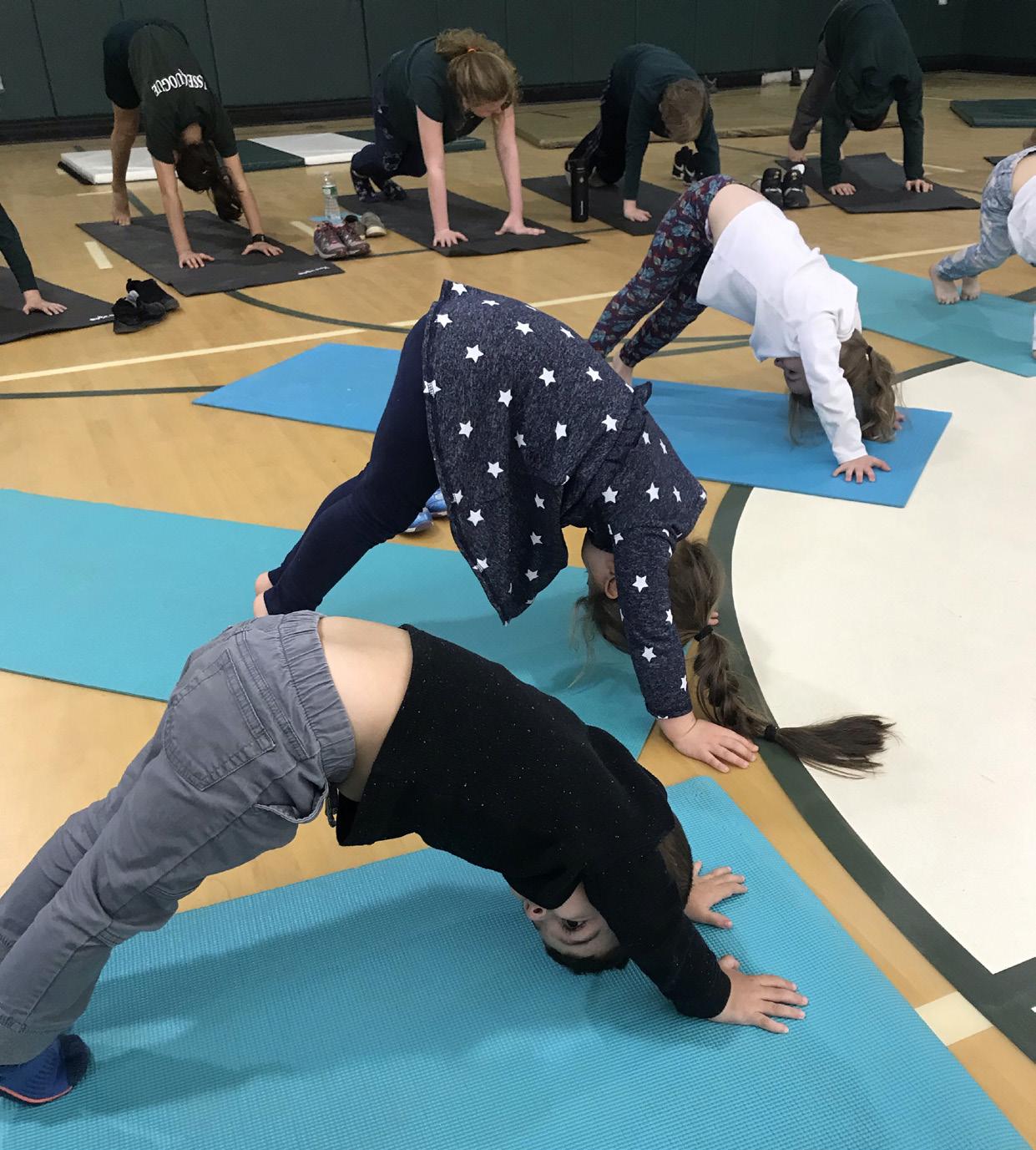
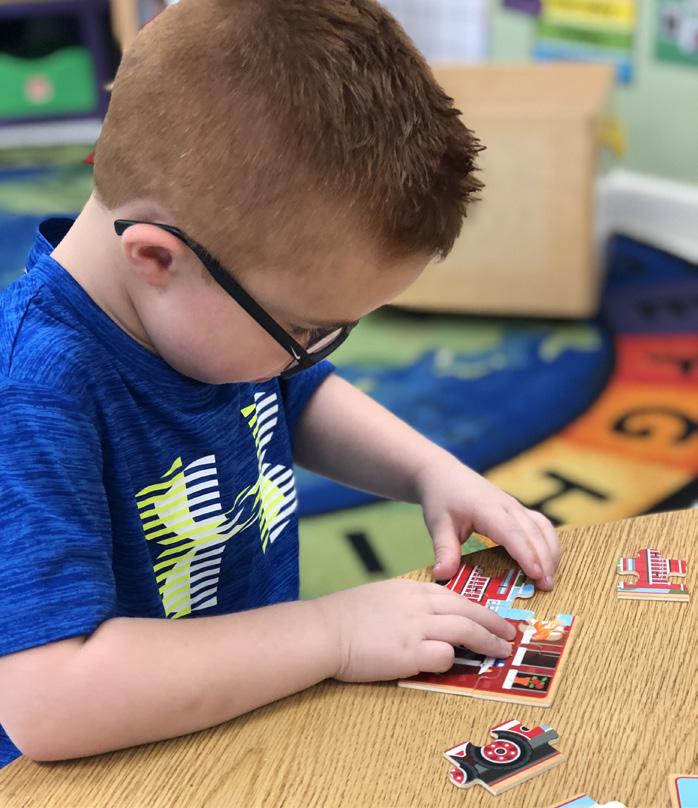

GROSS MOTOR
The preschool children play on the playground daily, weather permitting,
throughout the year where the equipment is designed to develop strength, coordination and agility. When inside the classroom, the students are exposed to large motor toys, such as building blocks, balance beams, dry erase boards, easels, magnetic boards, balls, and beanbags, which are all designed to encourage large motor development and agility. In addition, the classroom teachers play a variety of games and engage children in delightful musical movement activities that foster physical development.
Preschool 3s & 4s
PHYSICAL EDUCATION
Preschool 3s participate in physical education twice a week as part of their regular program, led by a state-certified early childhood physical education teacher. Students are introduced to basic locomotor skills throughout the year, using child-centered activities. The children learn about moving through general space while maintaining one’s personal space. By engaging in movement challenges, the students begin to develop social skills, gross motor coordination, and eye/hand, eye/foot coordination. In each class, a variety of musical genres are employed both as signals and for student motivation. As the school year progresses, listening skills are encouraged, with music as one of the tools used to help develop emerging listening capabilities.
Preschool 4s also participate in physical education twice a week as part of their regular program, led by a state-certified early childhood physical education teacher, where they engage in a wide variety of developmentally appropriate activities and experiences. Locomotor skills are practiced throughout the year. These include power walking, leaping, galloping, and skipping, all cued with music as a signal. Manipulative activities, using early childhood equipment, are explored during class. Child-centered activities during PE class allow students to experience frequent successes and improve their social skills, while encouraging the continual development of physical fitness levels. By the end of the year, each child develops a love of movement.

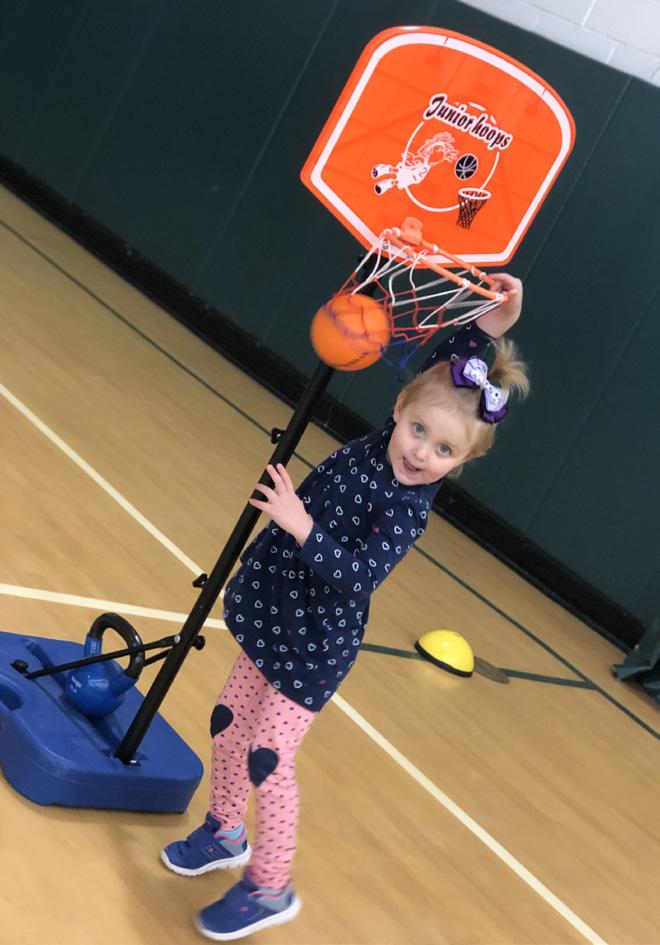


Preschool 3s and 4s
Both follow lessons that encompass a structured warm-up and stretching routine that in time can be self-run by the students themselves. Every class features a strong emphasis on personal space and how to move safely amongst their peers. Some sample topics/units that classes will follow are:
Movement exploration (e.g. animal movements, starting/stopping)
Locomotor skills development (e.g. hopping, running, walking, galloping)
Motor skills practice
Eye/hand eye/foot coordination skills development through the use of various manipulatives (e.g. scarves, balloons, small sized gopher balls, parachute)
Social interaction
Introduction to basic sport skills (e.g. Soccer—controlled kicks; basketball— bounce, catch, and dribble)
Preschool 3s & 4s
ART
In independent schools, we view the arts, athletics, and academics as core elements, with equal value, of the school curriculum. Students in early childhood have strong exposure to the arts, which includes art classes as well as music theory.
The Harbor preschool art curriculum is designed to help our youngest artists grow in perception, appreciation, and knowledge of the arts. We help our students grow in those areas through free expression, experimentation with materials, and decoding the history behind why we are able to create art today. Fine motor skills are matured through manipulating clay and the use of paintbrushes and drawing supplies. Students are encouraged to make connections with other subject areas through the creation of projects inspired by what they may be learning in their classrooms.
In art class, students work with our artist-in-residence in a studio setting. Our preschoolers work in whole-group instruction or sometimes in small groups, which rotate each week, depending on the project being developed. Since art is a centerpiece to preschool learning in the classroom, our preschool art class curriculum is designed to be a deeper and richer artistic experience. Students use a wide variety of tactile materials, such as clay, watercolors, sculpture materials, fabric, and paint, in an environment where creativity is key. Preschool art is about self-expression; the adult’s hand should not be seen in the preschool art piece. Preschool art is about process; all pieces should look individual and one-of-a-kind. We integrate our curriculum so that the themes being developed in the preschool classroom are also explored artistically in art class. We want our students to have the opportunity to demonstrate what they are learning in other disciplines (language arts, science, mathematics) through the creation of a work of art.
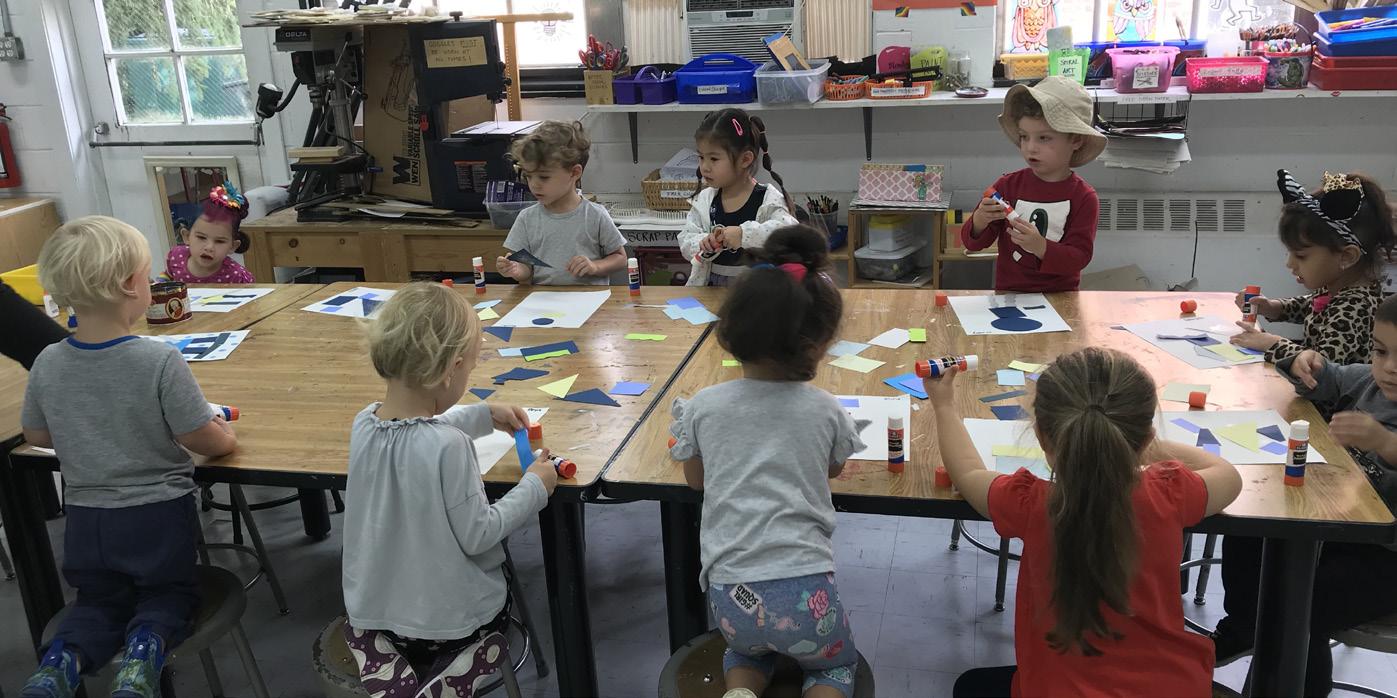


Art Curriculum Topics/Techniques:
Color theory: Roy G Biv (which are the colors of the rainbow), primary and secondary colors, and color mixing
Clay
Collage
Art history and decoding the art of the past
Printmaking
Painting/Drawing
Sculpture
Nature-based art
Preschool 3s & 4s
MUSIC
Music is the basis for Harbor Country Day School’s performing arts curriculum. Preschool students attend a minimum of two music classes a week, in which various topics relating to music are explored. Singing and vocalization are of great importance to our music program. Singing, chanting, rhyming, and rhythm activities are used to encourage active participation in an inviting environment. We believe that singing helps to promote a positive sense of community for even our youngest students. In addition to singing, preschool students use various rhythm instruments such as claves, egg shakers, and drums to explore rhythm, timbre, and tempo.
Preschool music classes expose children to musical concepts while developing self-esteem, self-expression, socialization, and concepts related to the preschool curriculum such as colors, numbers, shapes, nature, and so much more!
Learning through music enhances a child’s total development by strengthening physical, emotional, social, and cognitive skills. The children learn vocal control (whispering, speaking, calling, and singing). They learn to differentiate between loud and quiet, fast and slow, high and low and to understand steady beat and pitch. In our music classes, the students also experience music through body movement and by playing a variety of percussion instruments.
The Preschool 3s and 4s classes support the development of good listening skills in a classroom setting. Playing instruments and listening to music encourages young students to multi-task. Our music curriculum incorporates literature and/ or dramatic play to promote early (emergent) reading skills. Specific stories enable children to develop a sense of rhyming and steady beat, while having fun!

Each music class encourages: Taking turns
Playing cooperatively
Being a leader and a follower
Joyfully using one’s voice
Playing rhythm instruments

Preschool 3s & 4s
LIBRARY
Preschoolers visit the library weekly to hear books read to them, which coincides with what they are studying in the classroom.
Preschoolers are introduced to library procedures, such as how to borrow a book, and begin to have book discussions. The library curriculum follows the preschool modules throughout the year with topic-related trade books and activities. Within this curriculum, our teachers introduce students to library procedures, sharing materials, and story time.

Preschool 3s & 4s
Library Curriculum
Using inquiry to build understanding and create new knowledge
Pursuing personal and aesthetic growth
Demonstrating social responsibility
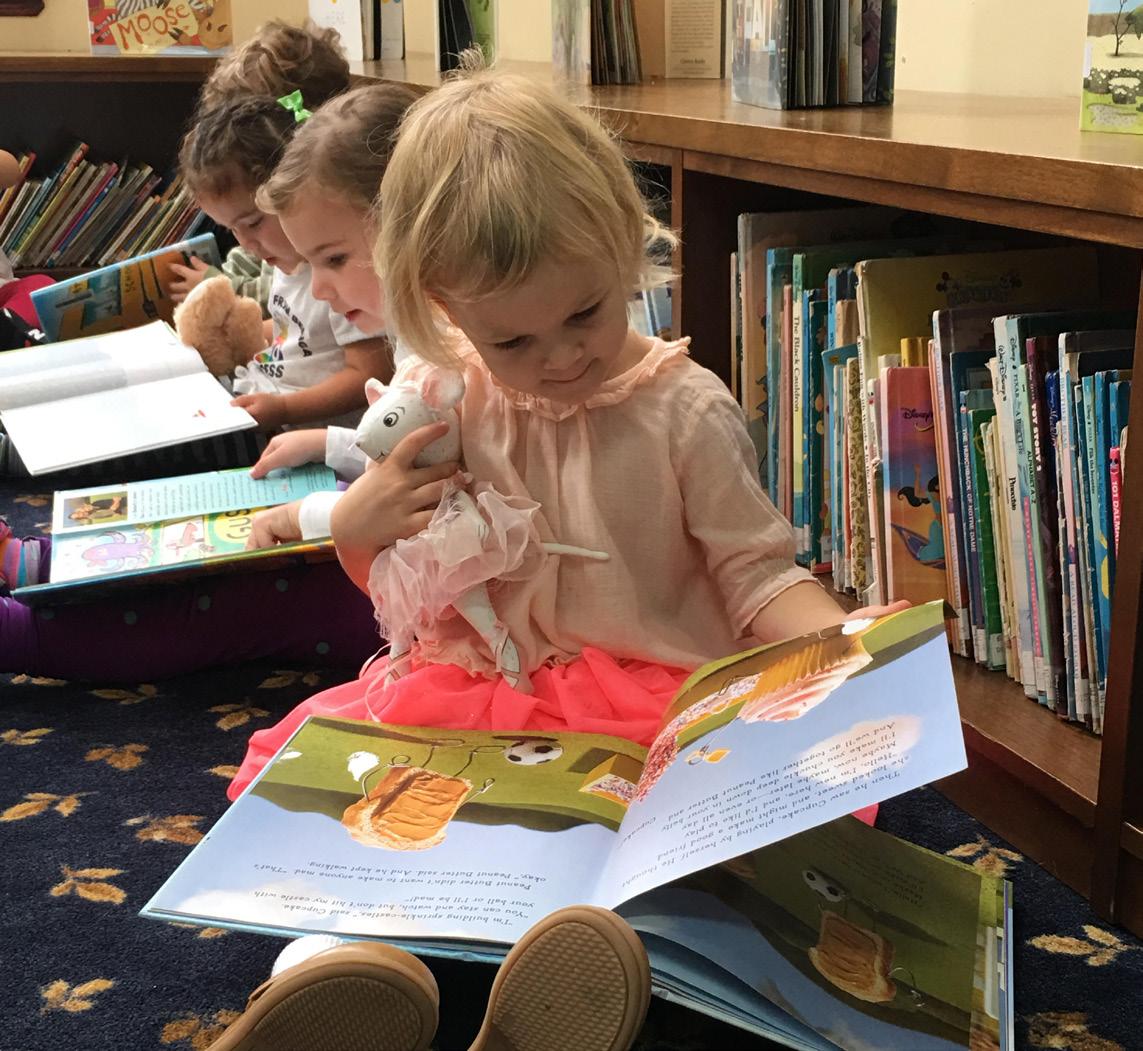
TECHNOLOGY
Starting in the Preschool 4s, the students begin to learn how to navigate and use the iPad for school-
related subjects (alphabet and number recognition/writing, classroom-related themes). They are also introduced to the concept of computer programming using Bee-Bots and Ruby sequencing commands (arrows on paper and actions on paper).
By the end of preschool, students are expected to:
Recognize and navigate a tablet (iPad)
• Power on and off
• Use the home button
• Unlock the tablet
• Swipe and tap
Recognize and launch applications

GLOBAL LANGUAGE
Beginning in Preschool 4s, our students start receiving global language classes.
Speaking a foreign language is a means of reaching out to others across cultural and linguistic boundaries, of helping people interact with people. The earlier language learning begins, the more practice and experience it can provide, leading ultimately to greater fluency, cultural awareness and appreciation. Preschool 4s students spend half of the school year learning Mandarin and the other half learning Spanish.
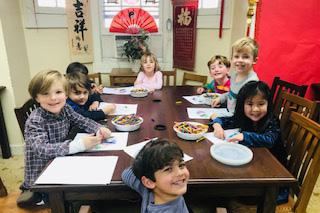

MANDARIN
In Preschool 4s, the Mandarin program consists of an ageappropriate Chinese language curriculum that reinforces content
and skills from listening, speaking, and reading and writing, as well as cultural themes. Mandarin is taught orally through movies, movement, songs, and simple games. Children are introduced to new vocabulary in various ways and at their own pace.
SPANISH
In the Preschool 4s Spanish program, there is a great deal of repetition, reinforcement, and review. The themes are taught through games, hands-on play, miming, singing songs, storytelling, puppets and videos. Some of the topics taught are: greetings, basic colors, numbers one through 30, counting, simple polite expressions and commands, weather expressions, family words, and parts of the body. At this age, language acquisition ranges from simple word elements to short conversational dialogues. The focus is on having students acquire language in a playful atmosphere at their own individual pace.
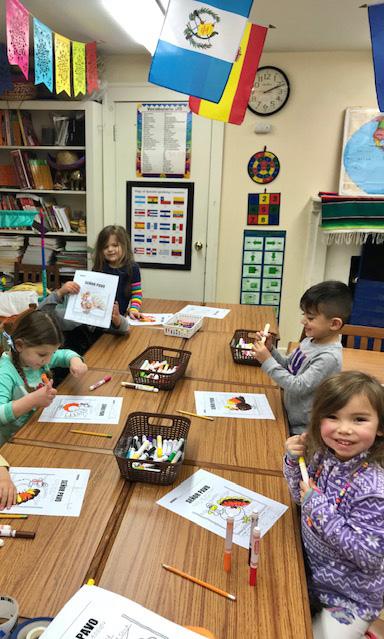
Mandarin and Spanish Vocabulary and Skills Include:
Basic greetings
Colors
Numbers 1 – 10
KINDERGARTEN
As children enter kindergarten, they are developing more
stable understandings of the world around them. We call this shift a change from imaginative thinking, where understandings are based on one’s own perspective, to scientific thinking, where one begins to form conceptual understandings. The academic curriculum is designed to support developing skills such as problemsolving and critical thinking. Our goal is to develop students who are ready for the lower and upper school curriculum by providing learning experiences that help develop the young child’s deliberate memory, mediated perception (knowing that some things are more important than others), logical thinking, sense of self-control, and focused attention.



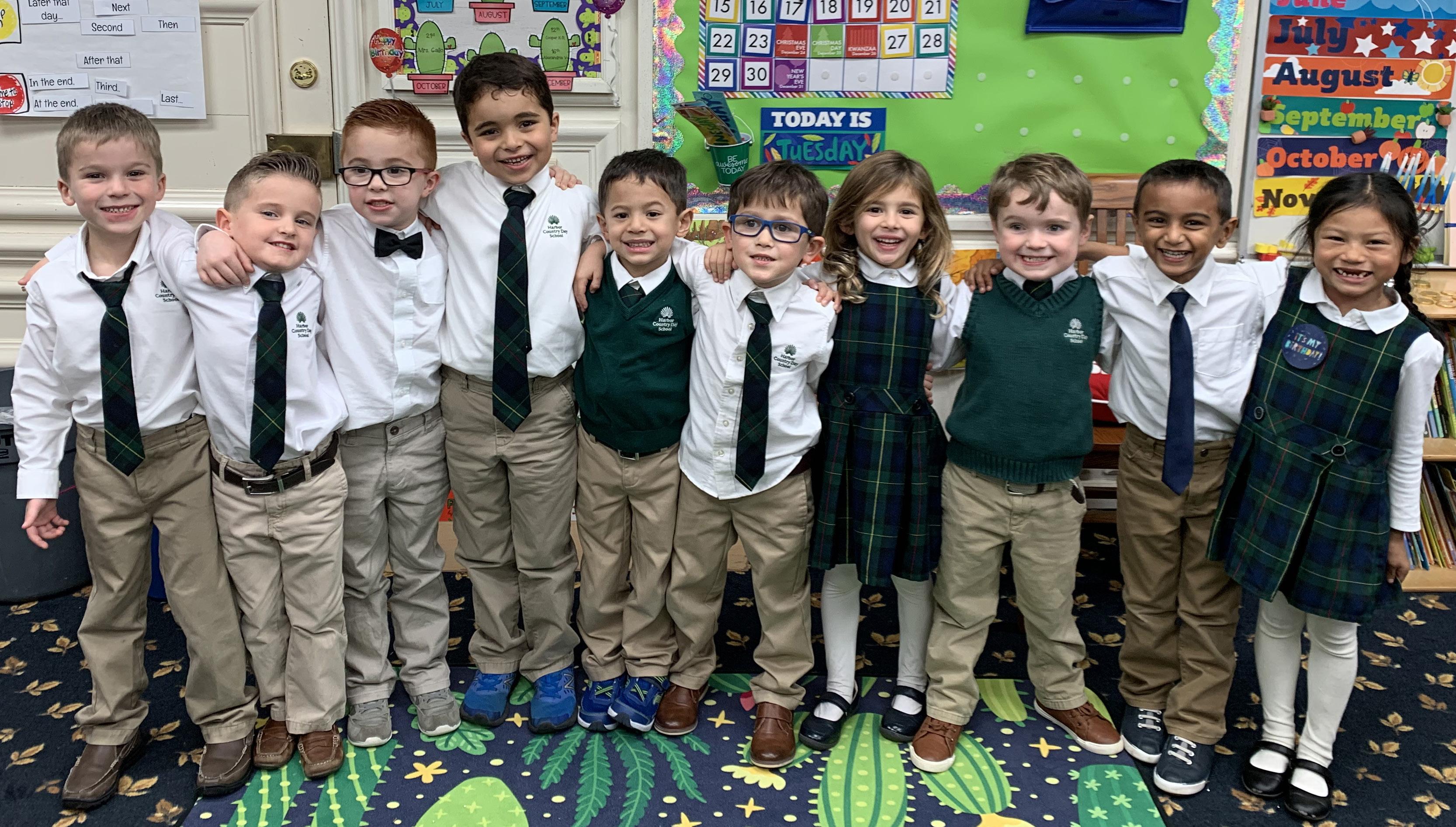
LITERACY
Kindergarten builds on the literacy skills introduced in preschool. The kindergarten program supports a print-rich
environment and has a strong phonics component. Students begin the Teachers’ College Reading & Writing Project, the first lesson of which is to think creatively about story ideas. During the kindergarten year, students learn to blend sounds to form words, they learn to recognize syllables, and can hear and say rhymes. We use Words Their Way for Emergent Spellers as a source of support with phonemic skills development. Students work on handwriting and distinguishing letter patterns, and they begin working with word families.

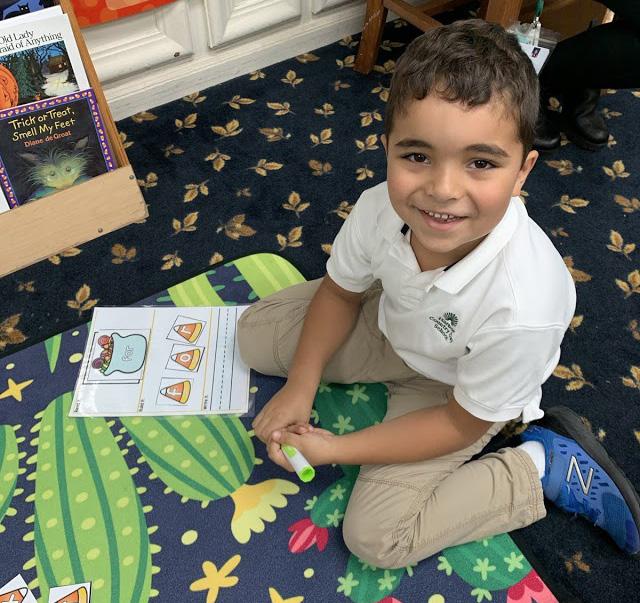


READING
At the beginning of the school year, the children are introduced to many books and are read to daily. They engage in shared reading as they read
along with their teachers as well as in guided reading and individualized reading. Students demonstrate their comprehension of different texts in a variety of ways, some of which include role-playing characters in the book or illustrating their favorite part of the story.
Each week a new letter is introduced to the students to further develop their phonemic awareness of letter-sound relationships. The students are also introduced to new sight words each week, which helps the students build their vocabulary; this becomes especially beneficial when the students are starting to learn how to read. This process also aids in the students’ phonological awareness, or recognition of the letter in written form. Students will use the program Wilson Fundations, which values the approach of hands-on learning and word sorts by grammatical and semantic features. The phonics program will be incorporated into centers and activities, as well as linked with both Reading and Writing Workshops. The students are learning how to match the emotion of the characters within the story to gain an understanding of spoken words and written words. During Reading Workshop through Teacher’s College, the children will read books at their instructional level with connected activities. Throughout the school year, the kindergarten students are assessed on their reading abilities three times a year with the use of the Teachers College running records.




WRITING
In Kindergarten, the students learn the mechanics of printing sentences, beginning at the top of the page and printing
from the left to the right side of the paper. As the children become more proficient in their ability to decode words, they are encouraged to print their own stories using phonetic or inventive spelling. Kindergarten is a time of intense storytelling creativity; we capitalize on this by encouraging inventive spelling, which frees the child of an expectation for perfect spelling. This allows a child to use any word, even those for which the child does not know the correct spelling. Inventive spelling encourages phonemic awareness. In Writing Workshop, the classroom utilizes Teacher’s College, which is a curriculum from Columbia University that uses a framework through the lens of authorstudents. The goal for our students is to channel their creative and imaginative minds using art and writing. With the use of writing folders, the students will be inspired to write in the units included within this framework. Kindergarten students are assessed at the end of each writing unit based upon their ability to complete the teaching point.
Students will use the Zaner-Bloser Handwriting program for handwriting. Short 15 minutes intervals are dedicated to handwriting, with the use of academic language and modeling. This improves fine motor skills and literacy development, as well as letter formation and automaticity.
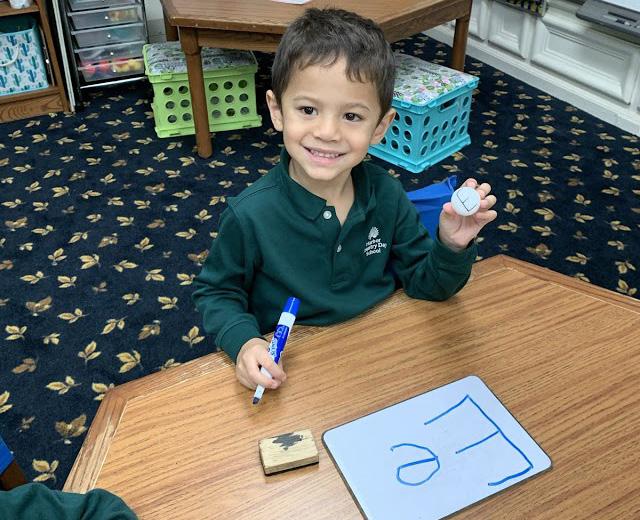
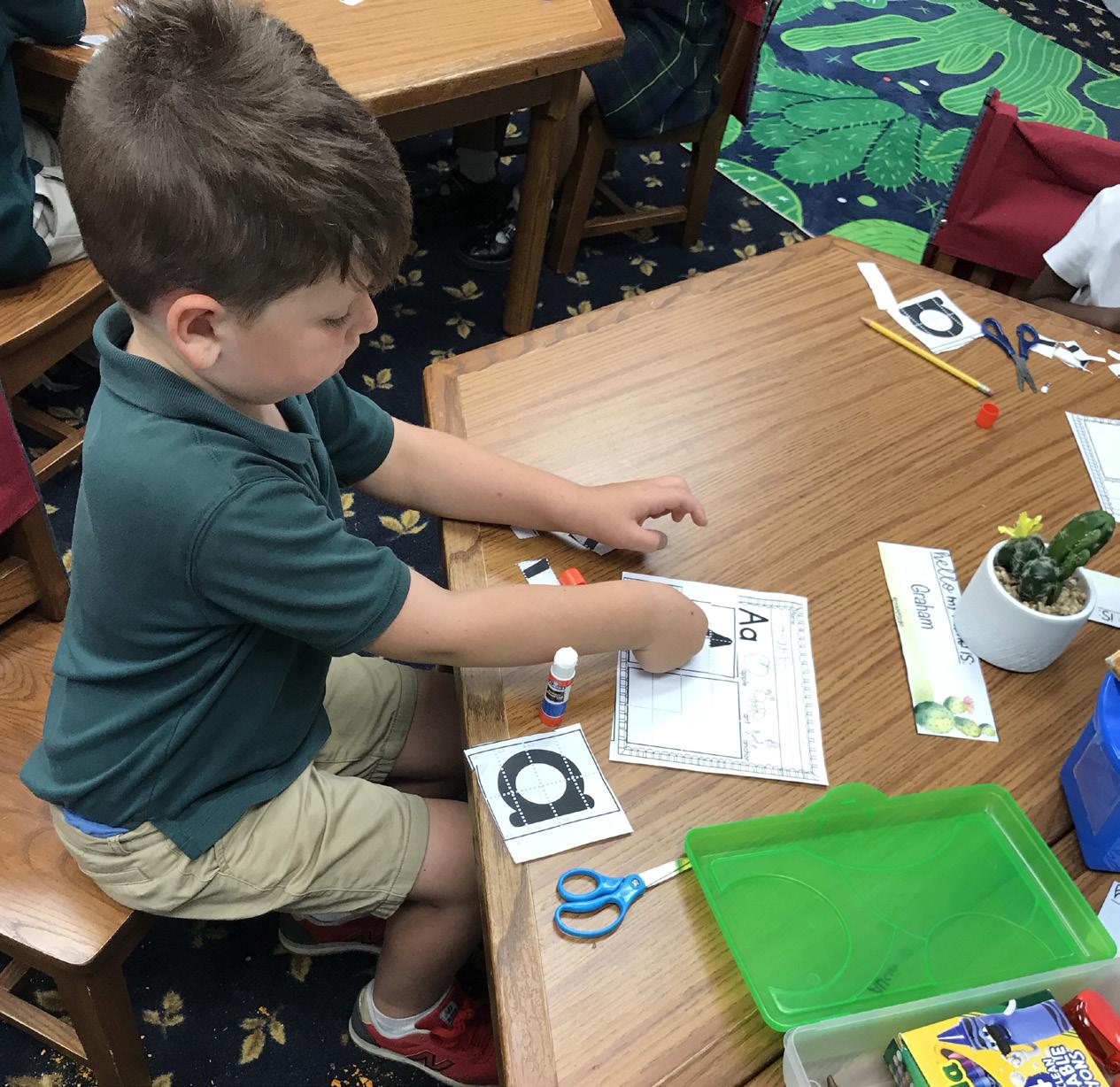

SPEAKING AND LISTENING
Throughout the course of the school year, students have many opportunities to practice their public speaking skills. Some examples include reciting poems and rhymes to peers and staff members, as well as sharing completed pieces of writing, special projects, and assignments.
Students practice active listening skills by following verbal directions, listening attentively while others are speaking, and listening and responding to stories that are being read to them. The expectations for kindergarteners is for all students to speak kindly to classmates and adults, speak clearly when answering questions and to participate appropriately in classroom discussions.

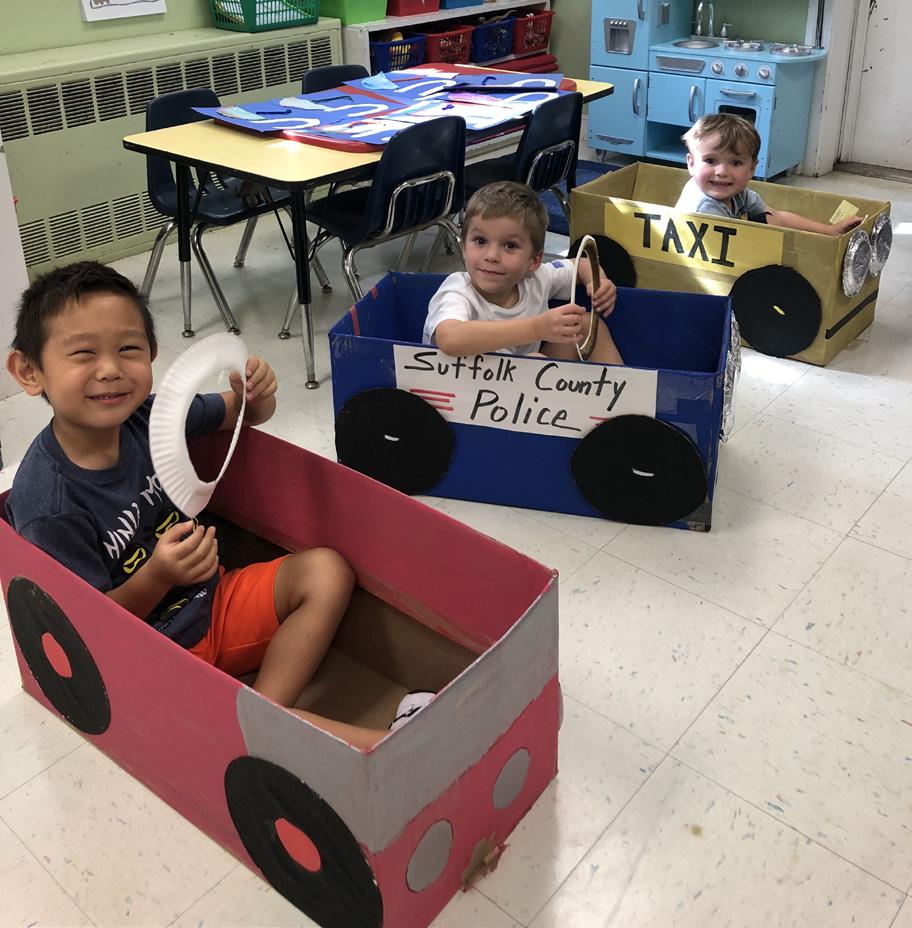

SOCIAL DEVELOPMENT
Within the kindergarten classroom, the students work
on a “Responsive Classroom,” which builds opportunities to socialize with peers appropriately. This ties in with the morning greeting and afternoon closure. Students will learn to work through social conflicts by using appropriate language. Through classroom jobs and peer interactions, students will learn how a community works together to function properly.
MATHEMATICS
Our approach to mathematics in kindergarten is conceptual and problem-solving oriented. Students show
how they solve problems using written language, illustrations, and number sentences. The curriculum focuses on describing patterns, sorting objects, making predictions, identifying odd/even numbers, shapes, and simple addition and subtraction. Language of greater than/less than is introduced. Children study time, ways we measure time, and money.
The math program we use in Kindergarten is called Singapore Math. This program is proven to be rigorous and in-line with our approach, which is for children to visualize what the problem is asking them to do and figure out how to solve it creatively. This program incorporates various mental techniques that allow students to use “invented strategies” and “left-handed brains,” and is more number-oriented and flexible. These techniques allow the students to think creatively and use “out of the box” thinking.


Kindergarten Mathematical Goals
Sort and match shapes
Count and write numbers to 10
Order numbers sequentially
Identify shapes (2D & 3D)
Create and complete patterns
Comparing sets of numbers (greater than, less than)
Measuring length, height, weight, temperature, and capacity with standard and nonstandard units of measurement
Write and count groups of objects to 20
Add and subtract with numbers to 10
Read and interpret data in a bar graph or with tally marks
Understand and practice estimating
Have a basic understanding of time, including years, months, weeks, days, hours and minutes; morning, afternoon, and evening; today, yesterday, and tomorrow
SOCIAL STUDIES
The early childhood social studies curriculum begins
with the classroom. Early on, especially in preschool, we instill a sense of community in the classroom, first by developing trust between the student and teacher, then by creating routines and structure that help to foster good feelings between peers in the classroom. We share our customs and traditions while modeling respect for others. Students learn about different people within communities. By kindergarten, we introduce a greater sense of community, as well as community helpers, symbols of patriotism, holidays, and map skills. This includes what a map is and what we use it for. Children are developing a burgeoning sense of responsibility to self and others. Across grade levels, students are given opportunities, in age-appropriate ways, to engage in higherlevel thinking, to problem-solve, negotiate, and to develop understandings related to facts versus opinions. A strong emphasis is placed on the ideas of citizenship, community, and respect.
Throughout the school year, the kindergarten classroom works on character development. Some of our most important skills include being able to join groups and welcoming others into a group. This way, everyone feels safe in the community, knowing that they are always welcome. Students also work on conversation skills, with a focus on considering other people’s perspectives and emphasizing empathy.




SCIENCE
Students in kindergarten have science with a dedicated, early childhood/ lower school science teacher. Students study the biological sciences, earth
science, and physical science. Kindergarteners study the five senses, living and nonliving organisms, migration, hibernation, and habitats. They learn about recycling by creating their own recycling stations and study endangered animals and habitats. In connection with the social studies curriculum, in science, kindergarteners bake pies and cook applesauce. Much of their curriculum takes place outside, where they take samples from trees, study root systems, and look for worms.
Kindergarten science focuses on using one’s senses and employing the scientific process. This is done through hands-on experimentation and activities. They work on hypothesizing and predicting. Units incorporate fall, hygiene, habitats, robotics, planets, and magnets.




ARTThe Harbor Country Day School studio art program is designed to help students grow in knowledge, perception, and appreciation for the arts. We help them grow in these areas
by exposing them to the theory and practice of art. Experimenting with new materials, exploring new ways of creating, and discovering new ideas are just as important as the history behind why we are able to create art today. The study of art history is an integral component to the curriculum, becoming the springboard for many projects. Connections are always made to classroom studies, helping students recognize how learning in all areas is interrelated. Students become well-versed in expressing their creative thoughts through the study of art studio vocabulary and group critiques. Students share their strengths/weaknesses and failures/successes while discussing their work and the work of others. A safe and open environment is fostered by never giving up, keeping an open mind, learning from our mistakes, never judging our work until we are finished, and knowing that artists are problem-solvers.

Theories/Practices
Explored:
Elements of Art
Principles of Design
Printmaking
Clay
Drawing
Painting
Illustration
Organic/Geometric Shapes
Emotion/Expression through Creating
Group Critiques
Color Theory
Art History
Collage
Collaboration
Cultural Exploration
MUSIC
Kindergarten marks a more formal classroom structure for our music classes. Students attend music classes twice a week and participate in both our choral
and instrumental programs. Beginning in kindergarten, all students participate in chorus. Chorus is an important aspect of our music curriculum, as it fosters a sense of community, responsibility, and teamwork. Students perform in the winter and spring concerts each year and develop skills such as following a conductor, pitch-matching, and concert etiquette.
Harbor’s instrumental program begins in kindergarten with the use of handbells and glockenspiels. Students are introduced to the concepts of pitched instruments versus rhythm instruments as they learn to play songs throughout the year. Dynamics, timbre, and rhythm are emphasized as a precursor to our recorder program.



During library read-alouds, kindergarteners practice reading comprehension skills such as identifying the beginning,
middle, and end of a story. They begin having discussions about books, are introduced to the ideas of genres and story elements, and are exposed to fiction and non-fiction stories. Kindergarteners begin to see that the library is a shared space in our school where we foster a love of literature.




TECHNOLOGY
Our kindergarten students use technology to enrich understandings and to organize, evaluate, and synthesize information. They learn practical applications for managing and organizing information: how to create, save, store, and retrieve their work. They learn about internet safety, and learn to use technology responsibly. Students have access to laptops and iPads. SMART Boards and iPads are used as teaching tools in classroom lessons.
In their technology classes, our kindergarteners use technology to view their world globally. They use Google Earth to make real-world connections to where they live, learn programming language (through the use of a program called SCRATCH JR.), and learn the basics of how to store information on a server. Specific skills include PowerPoint presentations, logging in and shutting down, saving information on the server, and some fundamentals related to using the computer and server.
By the end of kindergarten, students are expected to:
Know the different parts of a computer
Have good motor skills with touchpad and keyboard
Power up the computer
Login using a username and password
Follow HCDS’s internet safety and acceptable use policies
Launch and use the following programs with limited function:
• Google Chrome (web browser)— Navigate the internet and various websites
• Microsoft Word—Open document, save document, copy, paste, edit fonts
• Microsoft PowerPoint—Create slides, insert text and pictures, create different effects, give presentation
• Google Earth—Navigate the application and use addresses to locate their school and home
• Typing Pal—Know proper posture, using two fingers to type, and learn where the keys are on the keyboard
Continue with computer programming using:
• Bee-Bots and iPad app
• Daisy the Dinosaur on iPad
• Robot Turtles board game
• Ruby sequencing commands (arrows on paper and actions on paper)
• FlowChart (eat dinner, brush your teeth, go to bed)
• Scratch Jr.
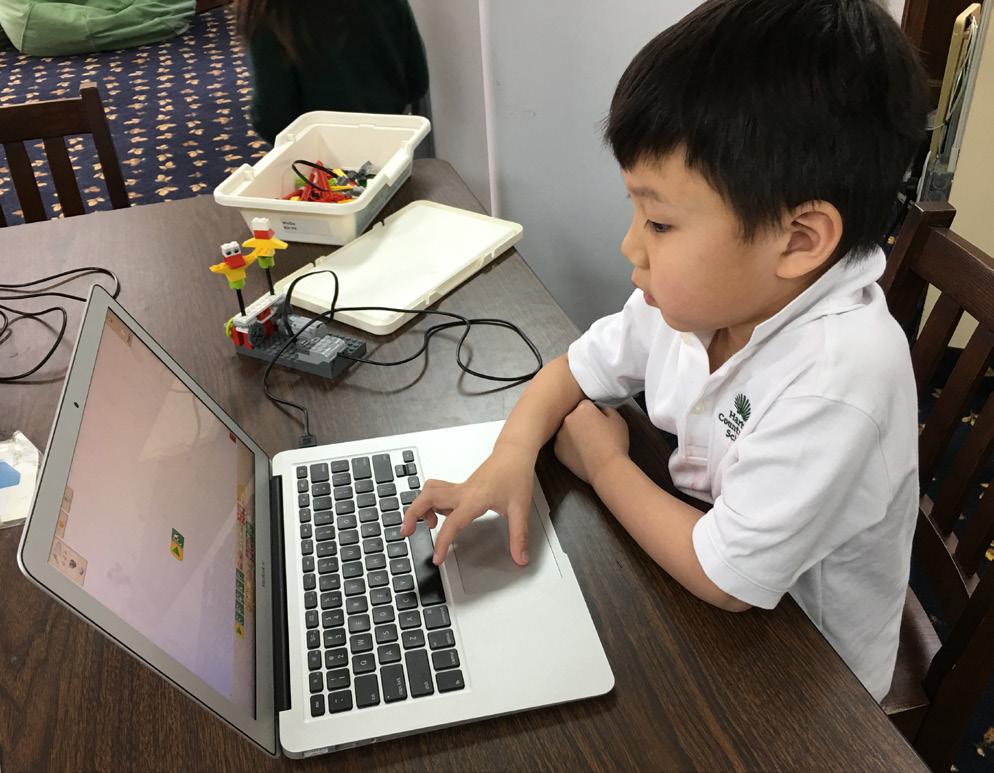
In addition, they will be introduced to:
The use of a network
Introduction to Robotics (Book 1, Kit 1)
• Simple machines
• Programming
• Building
The overall goals for our kindergarten technology program include:
Creativity and innovation
Communication and collaboration
Critical-thinking, problem-solving, and decision-making
Technology operations and concepts
FOREIGN LANGUAGE
In kindergarten, students are exposed to the languages of Spanish and
Mandarin in a natural approach. Our focus is on creating an immersion experience in which students receive meaningful, comprehensive input via role-plays, chants, songs, games, poems, and dialogues.

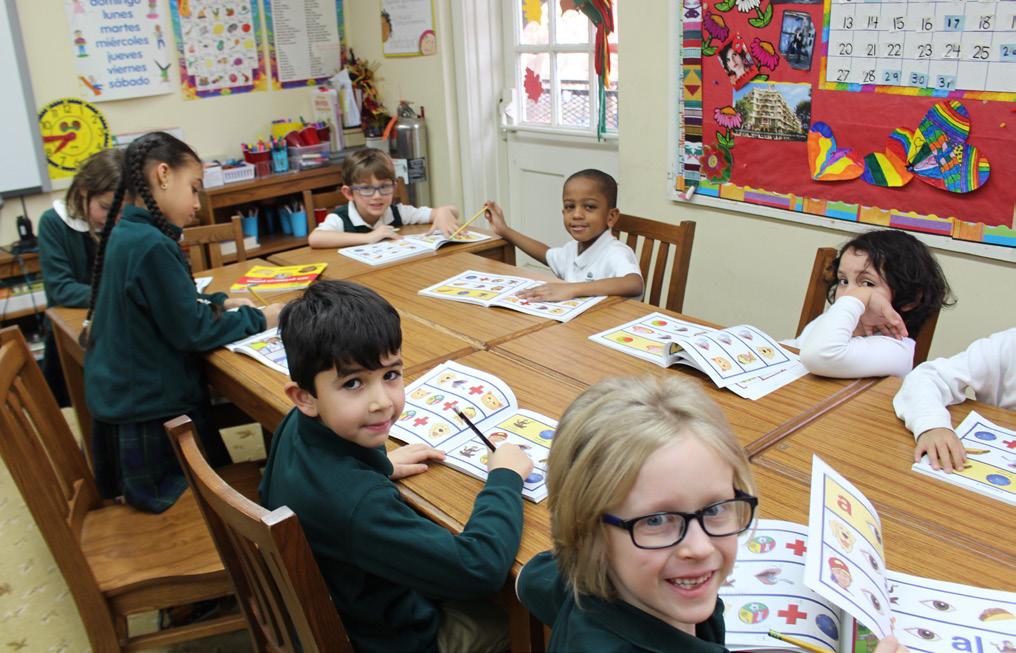
MANDARIN
The kindergarteners are introduced to an age-appropriate Chinese language program that reinforces content and skills through
listening, speaking, reading and writing, and cultural themes. Mandarin is taught orally through movies, movement, songs, and simple games. Children are introduced to new vocabulary in various ways and at their own pace.
SPANISH
Speaking a foreign language is a means of reaching out to others across cultural and linguistic boundaries, of helping people interact with people. The earlier language-learning begins, the more practice and experience it can provide, leading ultimately to greater fluency, cultural awareness and appreciation.
Language classes involve a great deal of repetition, reinforcement, and review. Themes are taught through games, hands-on play, miming, singing songs, story-telling, puppets, and videos. Some of the topics taught are: greetings, basic colors, numbers 1-30, counting, simple polite expressions and commands, weather expressions, family words and parts of the body. At this age, language acquisition ranges from simple word elements to short conversational dialogues. The focus is on students acquiring language in a playful atmosphere at their own individual pace.

Mandarin and Spanish Vocabulary and Skills Include:
Basic greetings
Colors
Numbers 1 – 20
Family members
PHYSICAL EDUCATION
Our physical education (PE) program supports the physical, intellectual, and social development of our kindergarteners. The students are exposed to a wide variety of activities in PE class. Through movement education, students learn and develop proper techniques of fundamental locomotor skills, such as skipping, galloping, sliding, and leaping. Warm-up activities for every class include gross motor coordination using motivational music, and movement exploration activities are practiced throughout the year. Eye/hand and eye/foot coordination, large muscle coordination, and balancing skills, along with listening skills (sequencing), are all developed through the use of manipulative activities and exercises.
Throughout the year, students are encouraged to begin developing their skills at taking turns. In each class, students are selected daily to be the “teacher” and assist in leading stretches. They participate in low organizational and group games aimed at further improving aerobic fitness, cooperation, learning strategies, and sportsmanship. The students learn to work independently, with a partner, and in a group in a cooperative manner.
Students in kindergarten take part in lessons that introduce dropping and catching (simulating basketball dribble) and consecutive kicking (simulating soccer dribble) to help develop sports concepts early-on that will be enhanced as they progress through the physical education program. With that, students in these grades also build on the basic locomotor movements taught in preschool, moving on to more difficult movements such as skipping and galloping.



